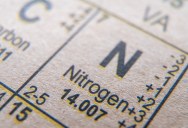Will The Periodic Table Ever Have A Maximum Number Of Elements?

Nitrogen on periodic table of the elements.
Do you remember how many elements there are in the periodic table? Spoiler: it’s probably different than you remember if you went to school before 2010.
The periodic table has 118 elements in total, and it seems to be expanding constantly. Just last year, they added elements 113, 115, 117, and 118: nihonium (Nh), moscovium (Mc), tennessine (Ts), and oganesson (Og).
This leads us to ask an important question: Is there a maximum number of elements included in the periodic table? The answer may be no, and here’s why.

For nearly a decade, the seventh period has been filled within the periodic table, but the eighth has yet to be completed or even discovered.
It’s normal for the periodic table to undergo many additions, as it has for many years. But one thing people have notoriously debated is what the limit of the periodic table is. Unfortunately, there’s no clear consensus on how many elements could be discovered, as every scientist who has presented a hypothesis seems to have a different result.

Many people are debating when the additions to the periodic table will end. Richard Feynman famously predicted that the table will end with element 137.
However, other researchers, like famed chemist Pekka Pyykkö used computer models and identified properties and supposed positions for up to 172 different elements.
Even more researchers have tried to suggest that there could even be a 173rd element, but some believe this theoretical limit would not ever be possible to achieve.

Regardless, many chemists in the field agree on one thing: no matter what the limit is, it might get harder and harder to find the theoretical remaining elements.
Without a clear answer from the experts, we’ll just have to wait and see!

Sign up to get our BEST stories of the week straight to your inbox.




